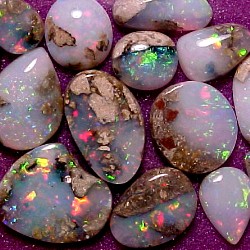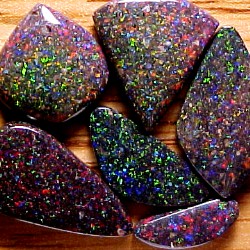by richardcarew on March 13, 2010
Brazil has several areas where opal is mined. Some of it is just fire opal, orange to reddish, to yellow. But this blog is about some of the finest Crystal precious opal in the world which is found around the town of Pedro Segundo named after the emperor Dom Pedro II or Segundo. Opal here is found both as a primary deposit and as alluvial deposits. Probably the most famous primary deposit is at the Boi Morto mine where opal occurs in a bi-level oriented sandstone quartz-dolerite contact. The quartz-dolerite rock is a silica rich plutonic basalt of medium crystal size (around 1mm) and the opal forms in the sandstone which is on the bottom of this construct. Opal is found in seams in the sandstone, and to some extent in the quartz-dolerite in small nodules. The other main area of mining is an alluvial area about 10 to 14 kilometers square called “la Roca”. Here the “garimpieros” or independent miners dig in the dirt for secondary deposits of opal. Most of the opal found in the area is found in this way. They dig a bucket full of dirt and carry it to someone standing in a muddy water hole where it is then washed over and over on a screen to look for the elusive opal. It is said that opal can be found in this way for about a twenty kilometer radius outside of P II but la Roca has the highest concentration and in fact is where the first opal was found in the area. As usual there are lots of little opals and not many large opals but there are some very nice large ones. Here are some nice smallish rough specimens: Credit for these Photos goes to www.BrazilOpals.com:
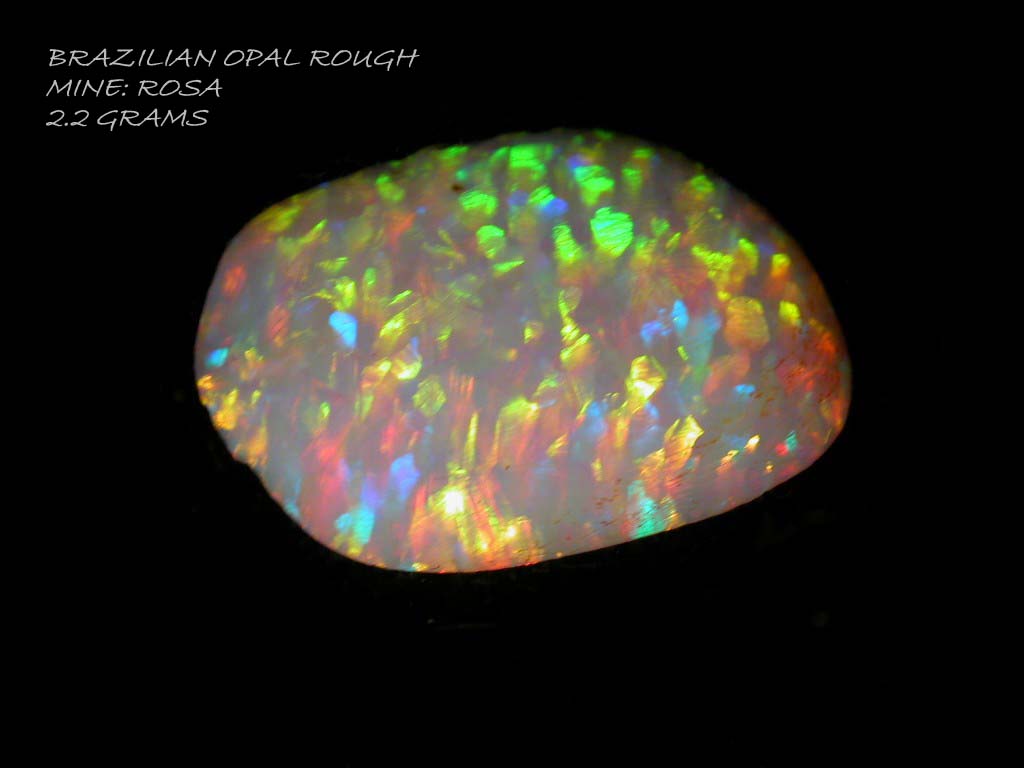
s
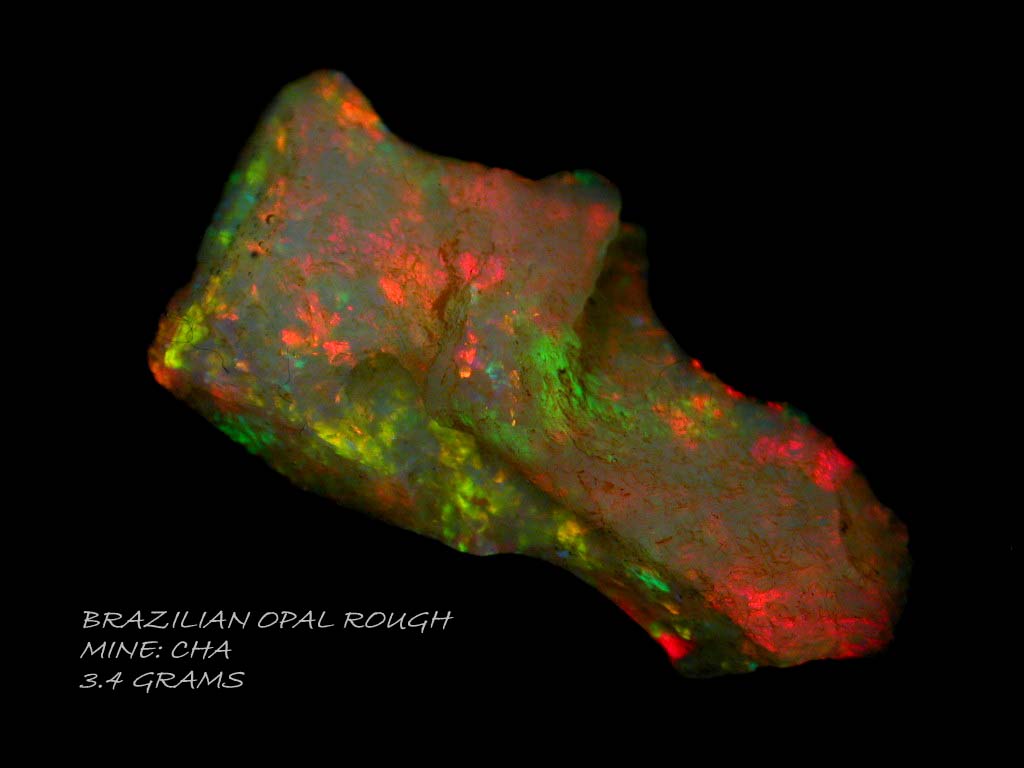
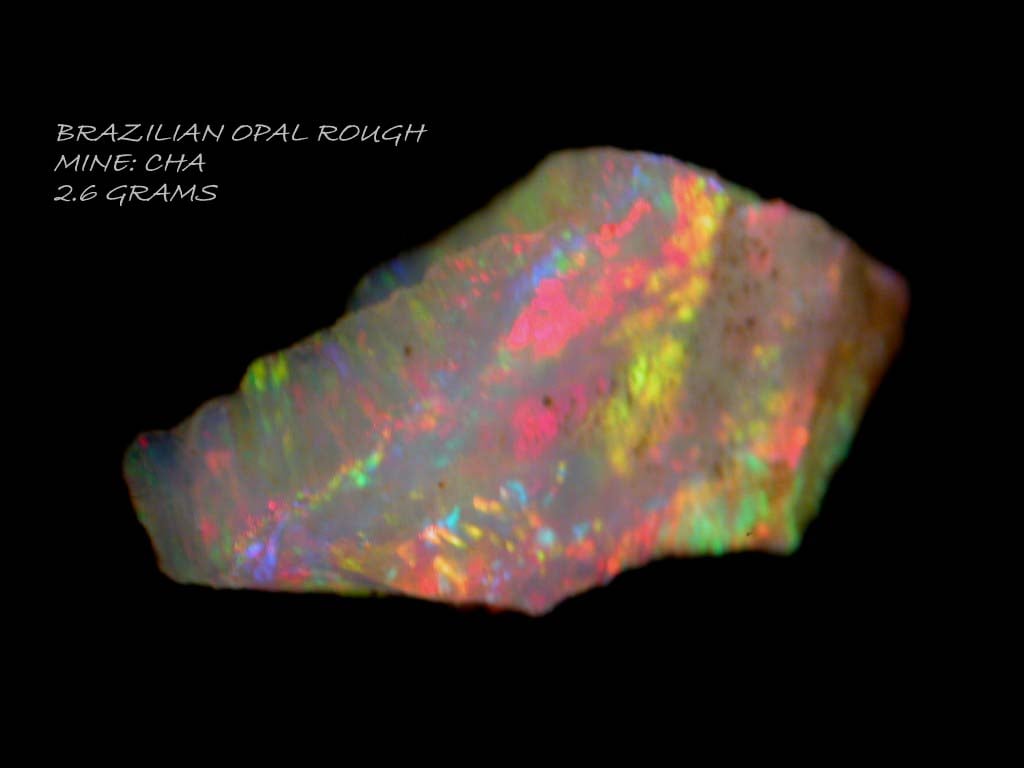
by richardcarew on February 14, 2010
Heading south to Honduras where some fine Black Opal is produced as well as some interesting Boulder Opal. Actually it’s all Boulder Opal the Black Opal is a crystal clear opal that is overlaid on top of a black basalt, which is considered a Black Opal. In Australia it is often the case where a band of crystal opal overlays some black potch and that is most certainly considered Black Opal so we will allow the Hondurans to have their Black Opal too. It is found in vertical seams that are the highlight of a Honduran’s day if he can find one. These seams run anywhere from as thick as a hair to a half an inch thick (13mm). Other wise there are several types of Boulder Opal. One type is in the basalt where tiny vesicles of gas pockets are filled in with precious opal. This stuff comes in different grades, from common opal which is said to be as common as street gravel all the way to very nice precious opal that is as rare as it is nice. The other kind of boulder opal is found on an andesite volcanic rock where again the best is found in vertical seams. This ranges from crystal to milky white to sky blue and can be very bright. Sometimes they find a horizontal seam that is mixed with the matrix rock. Next up Brazil. Here are a couple of examples from Honduras:
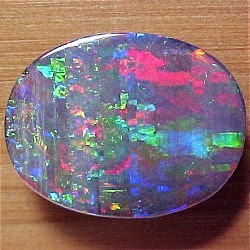
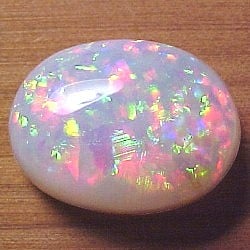
These are the “Don Pablo” on the lefta Black Opal from Honduras weighing in at 8.22 carats , and the Sosoalito on the right weighing in at 9.2 carats also from Honduras. You can see what I mean they are both just as bright as they can be.
The guys who mine this stuff do it with the most primitive tools, basically a hammer and chisel so they are in no danger of mining themselves out of business. Here are some more photos. There are Black Basalt Opals on the left, Andesite Boulder Opal in the bottom middle, Andesite Matrix Boulder Opal on the Right and “not road gravel” Basalt Matrix Opal on the bottom. My thanks to Tony Dabdoub of members.cox.net/tropicalgems/Hopals.htm.

